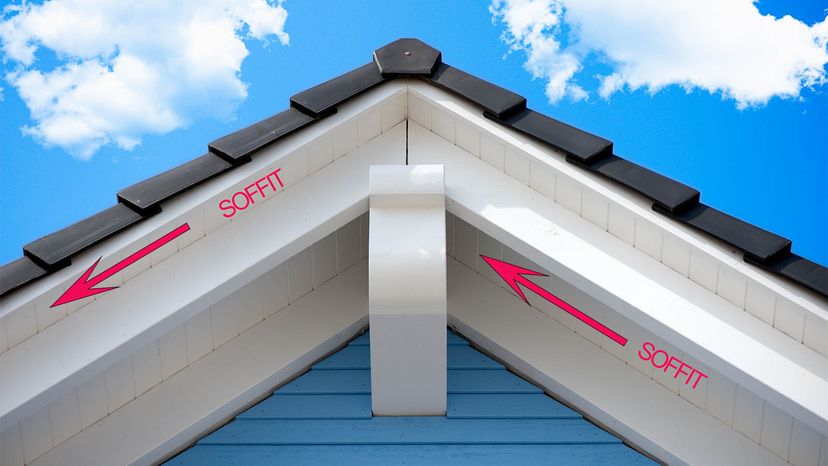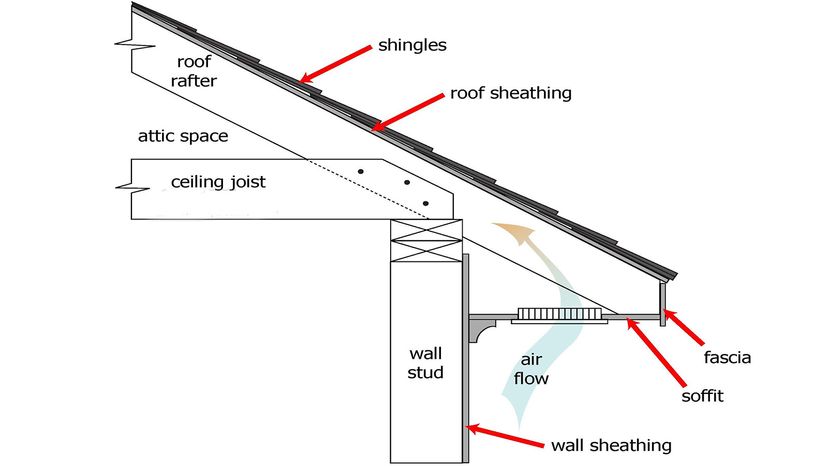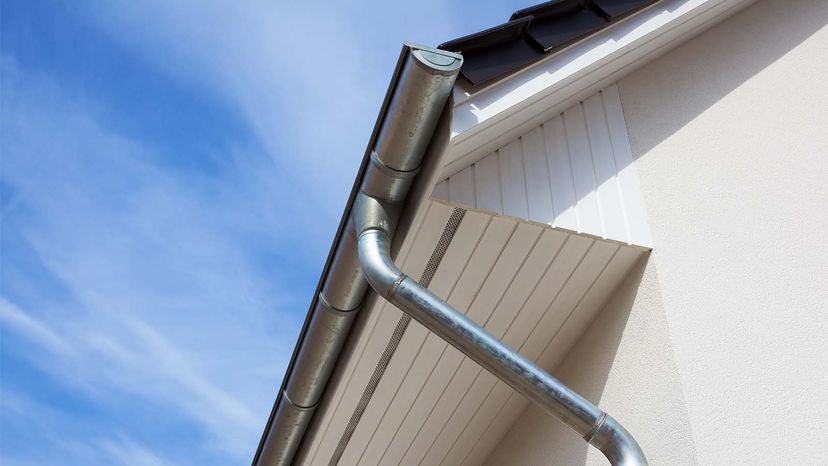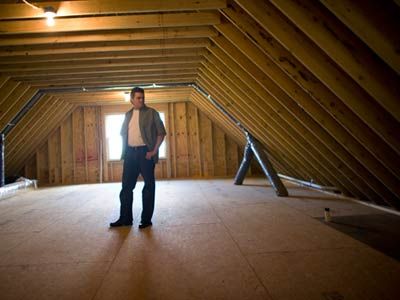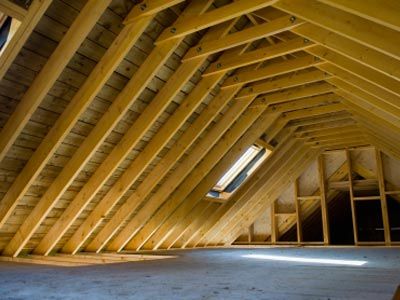Soffits have an important job on the outside of a house. They protect the underside of the eaves from moisture and rot. Moisture can cause big problems, not only to the eaves, but also to the attic. In fact, soffits can be essential to a properly vented attic.
Vented Soffits
"Traditional attics are unconditioned and uninsulated, requiring air circulation so they don't overheat during the summer or trap cold moist air during the winter," Larrison says via email. "During the hot months, air moves up from the vents in the soffit, through the attic, and out either a ridge vent at the top of a roof or through vents spaced properly along the upper part of the roof."
This benefit doesn't only apply during hot summer months. The reverse happens during cold months, and in all seasons, this ventilation is vital.
"Overheating can shorten the life span of materials, mainly roof shingles and add to energy costs, while trapped moisture creates a breeding ground for the dreaded 'M' word: mold," Larrison says.
Protecting Attic Space
Soffit vents are proficient at preventing mold growth. Additionally, a vented soffit helps keep unwanted intruders like insects, pests, and birds out of the attic, too.
Despite their benefits, not all homes need soffits. For example, an attic can be ventilated by gable vents — those cute features that look like louvered shutters on the exterior face of an attic. Homes employing this look typically have insulated attics, negating the need for outside air circulation, which is the main purpose of soffits, Larrison explains.
